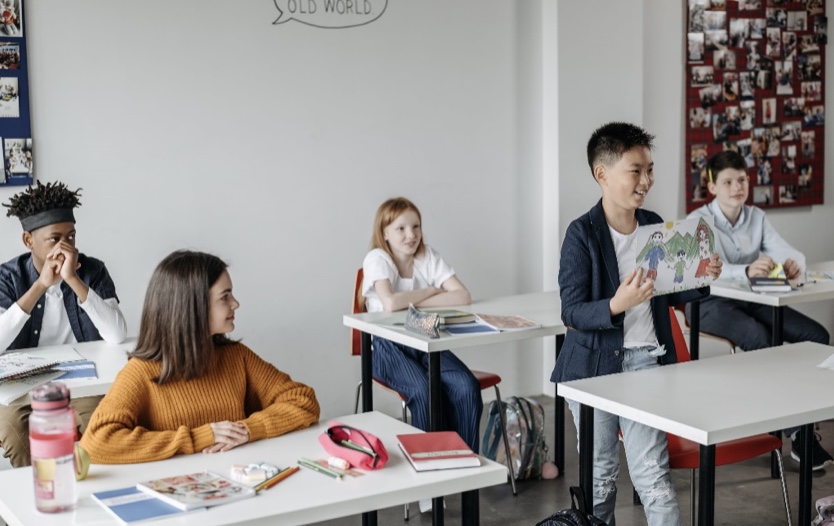In this modern era, innovative teaching methodologies and digital learning have made considerable advancements in education. Understandably, the role of teachers has also significantly evolved to cope with these changing times. Classrooms now have a more diverse and multicultural group of students from different countries, ethnicities, religions, and races—known as multicultural education.
Any form of education or learning that incorporates the beliefs, histories, values, and perspectives of individuals from different backgrounds is known as multicultural education. Its primary objective is to ensure every student, no matter what their experience, receives equal opportunities for learning in schools or any other institute. But while it promotes diversity and acceptance among students, it also comes with several challenges like language barriers, different learning styles, or ineffective communication. Students may feel that they do not “belong” in a classroom or feel left out if these challenges don’t find a solution.
Here are five approaches you can use to deal with some of the most common challenges faced in a cultural setting.
1. Gain relevant education
It is often easy to confuse a student’s inability to comprehend lessons with laziness or unwillingness to perform in class. Despite increasing awareness about educational challenges in the previous years, teachers and parents remain tragically underserved in addressing and understanding them. Therefore, the demand for educators with the appropriate knowledge and training to teach these students increases by the day.
If you as a teacher wish to provide your students an environment inclusive for all backgrounds, consider earning a Master’s in Elementary Education degree. The curriculum and training offered in such programs can help you develop interactive learning experiences to cater to all students.
2. Address language barrier
One of the primary aspects that differ in students from various backgrounds is the language they speak and understand. Thousands of students enter classrooms where teachers cannot understand their language every year. With a variety of languages present in a multicultural classroom, the risk of a language barrier can negatively impact a student’s performance. Students who lack understanding of the language you use often struggle to communicate during lessons and with class fellows. They may shut down out of fear or embarrassment, leaving them vulnerable and feeling out of place.
As a teacher, you must overcome this challenge and reach all your students equally. Use plain and straightforward language, talk clearly and slowly, and use pictures or symbols to communicate lessons as much as possible.
3. Identify your students’ strengths
Most teachers only have a superficial knowledge of their students’ learning styles. This knowledge often comes from distorted information conveyed through popular culture, critics, and mass media. Every student is different. A teaching strategy for one student may not be as helpful for the next one, so you need to keep trying new techniques. Teachers must set aside prejudices and misinformation and instead focus on identifying their students’ strengths to help them learn better. Some children are visual learners, while others prefer audio-based lessons or kinesthetic learning. To plan lessons for effective learning, you must identify areas where your student can perform best.
Address the visual learners by:
- hanging posters and illustrations in the classroom
- using colorful pens and highlighters to mark information
- creating artwork and drawings
To help audio-based learners, try:
- reading books aloud or playing story recordings
- watching videos with concept explanations
- composing and singing rhymes, songs, or poems to memorize lessons
Kinesthetic learners can participate by:
- designing experiments in a classroom
- buildings models and objects with clay or playdough
- solving puzzles or finger-tracing lessons in the sand
4. Know your students
The first step in overcoming the challenges of a multicultural classroom is to get to know your students better. Asking students about their struggles, families, or previous school experiences can help build your relationship with them. Once you identify their interests and hobbies, you’ll be able to plan better and more personalized lessons, encouraging them to participate in in-class activities. No matter how young they are, students are not blank states when they come to you. Their experiences, lifestyle, environment, and family life shape their personality and contribute to their learning capabilities. As a teacher, you must encourage students to draw from these experiences and share their perspectives during group discussions. It promotes diversity within the classroom and supports general tolerance and acceptance in society.
5. Revise classroom curriculum
While the classroom settings are constantly evolving, most school curriculums remain obsolete and never-changing. But, education institutes that are multicultural inclusive should revise their school lessons to create common goals to achieve learning outcomes. Changing a curriculum doesn’t require you to start anew completely. Instead, you must incorporate specific objectives that address different cultures in your classroom. Your students must feel like they are seen and acknowledged. Creating an environment that promotes diversity will enable students to engage in everyday class activities. It also increases participation, building a solid platform for learning.
You can even appeal to the higher-ups in educational institutes to modify standardized tests. Using assessment tools is more efficient as they are more linguistically and culturally appropriate to analyze student performance.
Conclusion
With time, borders are fading between countries, and social acceptance among diverse groups is becoming more common. Overcoming challenges in multicultural classrooms is more important now than ever before. Teachers, school heads, admins, and all educators, in general, must make a concentrated effort to address these challenges and create a learning environment inclusive for all students.

